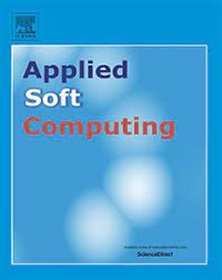结合 N-grams 和图卷积进行文本分类
IF 7.2
1区 计算机科学
Q1 COMPUTER SCIENCE, ARTIFICIAL INTELLIGENCE
引用次数: 0
摘要
本文章由计算机程序翻译,如有差异,请以英文原文为准。

Combining N-grams and graph convolution for text classification
Text classification, a cornerstone of natural language processing (NLP), finds applications in diverse areas, from sentiment analysis to topic categorization. While deep learning models have recently dominated the field, traditional n-gram-driven approaches often struggle to achieve comparable performance, particularly on large datasets. This gap largely stems from deep learning’ s superior ability to capture contextual information through word embeddings. This paper explores a novel approach to leverage the often-overlooked power of n-gram features for enriching word representations and boosting text classification accuracy. We propose a method that transforms textual data into graph structures, utilizing discriminative n-gram series to establish long-range relationships between words. By training a graph convolution network on these graphs, we derive contextually enhanced word embeddings that encapsulate dependencies extending beyond local contexts. Our experiments demonstrate that integrating these enriched embeddings into an long-short term memory (LSTM) model for text classification leads to around 2% improvements in classification performance across diverse datasets. This achievement highlights the synergy of combining traditional n-gram features with graph-based deep learning techniques for building more powerful text classifiers.
求助全文
通过发布文献求助,成功后即可免费获取论文全文。
去求助
来源期刊

Applied Soft Computing
工程技术-计算机:跨学科应用
CiteScore
15.80
自引率
6.90%
发文量
874
审稿时长
10.9 months
期刊介绍:
Applied Soft Computing is an international journal promoting an integrated view of soft computing to solve real life problems.The focus is to publish the highest quality research in application and convergence of the areas of Fuzzy Logic, Neural Networks, Evolutionary Computing, Rough Sets and other similar techniques to address real world complexities.
Applied Soft Computing is a rolling publication: articles are published as soon as the editor-in-chief has accepted them. Therefore, the web site will continuously be updated with new articles and the publication time will be short.
 求助内容:
求助内容: 应助结果提醒方式:
应助结果提醒方式:


